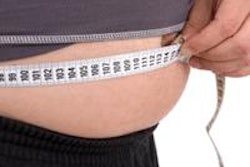
If dental hygienists do not integrate the growing evidence on the oral-systemic link into their practices, they will have forfeited a great opportunity to define themselves as healers rather than mechanics, according to Casey Hein, BSDH, during the Pacific Dental Hygiene Conference last week at the Arthur A. Dugoni School of Dentistry in San Francisco.
"I want to see this evidence base that we have accumulated really come full circle," said Hein, the president of Casey Hein & Associates and an assistant professor at the University of Manitoba.
In a presentation that focused on obesity in dental patients, she urged her colleagues in dental hygiene to think of novel ways to incorporate this science into their practice, and emphasized that hygienists are better positioned to use this information than any other healthcare practitioner.
Hein acknowledged that a patient's weight can be a difficult subject to discuss.
"When I mention obesity in other lectures, people often react with ‘How can we possibly talk to our patients about obesity? That's really stepping on some toes,' " she said.
While she wasn't around in the 1960s when dental practices started to incorporate blood pressure screenings, Hein has spoken to people who were there and they told her they didn't get any push back, she added.
"No one said to them that blood pressure testing is outside the scope of your practice," she said. "They just did it."
Body mass index (BMI) critical
Oral healthcare providers are ideally positioned to screen and refer patients at risk for being overweight and obese since they usually see the patients at a higher frequency than other healthcare providers, according to Hein. In 2008, at least 70% of Americans visited a dentist within the previous year, which puts the dental office in a unique position since patients typically see their healthcare providers less frequently.
“Increased body fat is linked to increased risk for periodontal disease.”
She referenced a 2010 study in the Journal of the American Dental Association that identified the factors that influence the involvement and participation of dentists in obesity prevention and intervention efforts. The researchers mailed surveys to a random sample of ADA members to assess their interest in, and barriers to, providing obesity counseling to patients.
Among all respondents, 142 (4.8%) reported that they offered weight-related screening or counseling services to their patients. Pediatric dentists were much more likely than were general dentists to respond that they referred patients to a medical care provider for weight-related issues.
"The study found a small percentage of dentists are providing obesity prevention services, and pediatric dentists are doing a little bit more, which is great in my opinion," Hein said.
She emphasized that today's standards for what qualifies as overweight kids are very different, and the dental team needs to be cognizant of this.
On the U.S. Centers for Disease Control and Prevention (CDC) BMI-for-age charts that apply to children 2 and older, children should fall within the fifth and 85th percentiles for weight because anything higher than that puts them in the overweight category. The percentile ranking is obtained by plotting the child's BMI on the CDC BMI-for-age growth charts (for either girls or boys).
Discussing weight can be a tough conversation, Hein said, but she emphasized that there is nothing wrong with having this conversation with a mother since we know that there is a lot of research that suggests obesity is linked to oral health.
"We can make a difference by targeting that child and that family," she said. "BMI relates to risk factors for other disease when they are older, such as cardiovascular disease, high blood pressure, and elevated insulin."
According to the most recent guidelines issued by the National Institutes of Health (NIH), the following adults are also at risk for being overweight and obese: those with a BMI of 25 and higher or a waist circumference of more than 35 inches (88 cm) for women and more than 40 inches (102 cm) for men.
The JADA study found that some of the main barriers to offering obesity-related intervention in the dental office included fear of offending patients, appearing judgmental, lack of trained personnel, and lack of patient acceptance of weight loss advice from a dentist.
Some talking points
Hein shared some of her own ideas for how to deal with obese and overweight patients in the dental practice.
A patient who is obese or overweight according to the NIH definition and has two or more risk factors – such as smoking or high blood pressure -- can be a candidate for weight loss therapy, she explained.
Since it takes a major investment of time and energy on part of the dental team and expense on part of the patient, it is important to assess if the patient is ready for weight loss. If they are not, heighten their motivation by enumerating the dangers of obesity and sharing others' success stories, Hein said.
The way the NIH guidelines are set right now, hygienists have some of the requisite knowledge and ability to offer weight loss therapy, but they do not qualify for some of the requirements, such as prescribing weight loss drugs, according to Hein. They can, however, refer patients to physicians, dieticians, and other appropriate resources, she noted.
Even so, hygienists may be comfortable sharing some key messages with their patients, Hein added. For example, according to recent research, obesity increases the risk for periodontal disease, and abdominal obesity can be a risk factor for periodontal disease. Also, individuals with a BMI of 30 may be eight times more likely to develop periodontal disease than individuals with a BMI of less than 20.
"Increased body fat is linked to increased risk for periodontal disease," Hein said. "To consider whether patients might be at risk for periodontal disease, ask them to take their measurements for central adiposity and calculate their BMI.
"You can be comfortable with this research," she concluded. "How you articulate it is up to you."



















